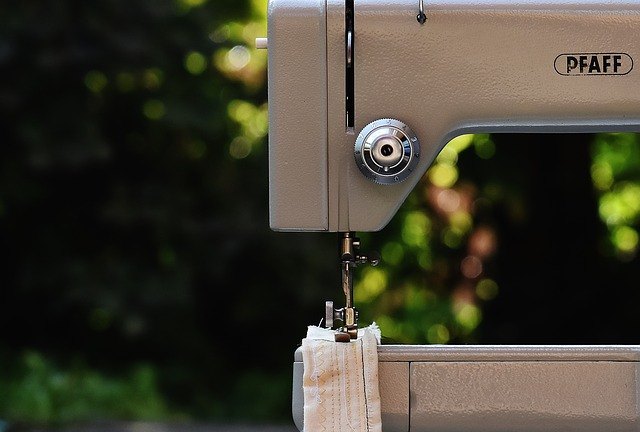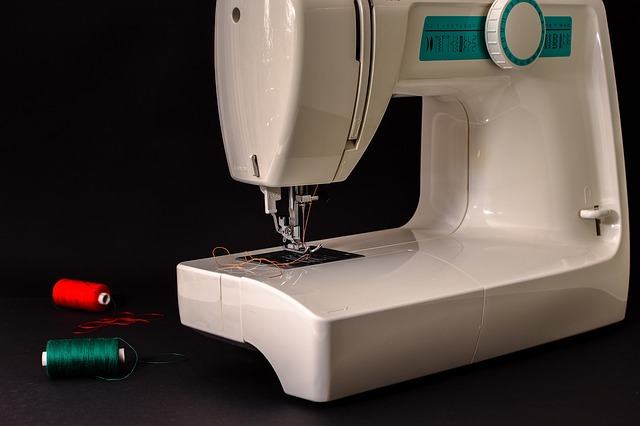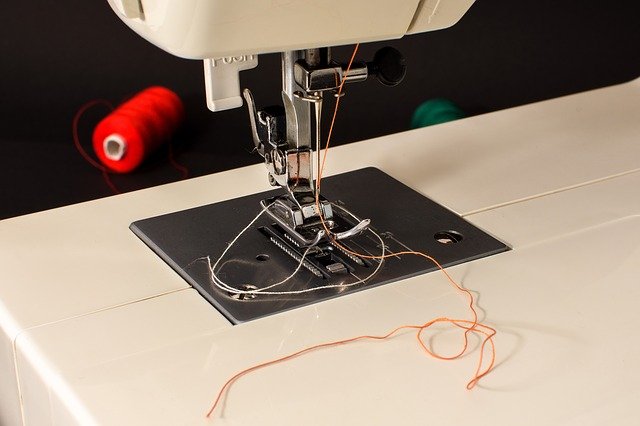Learning how to oil a sewing machine is essential for any beginning sewer.
There are several elements involved in the process, however, and that can make getting started a little intimidating.

We’ve gathered together some facts about different oils and the oiling process in general, so you can best understand how to care and keep-up your sewing machine.
Why Oil Your Machine?
You need to keep your sewing machine well-oiled in order to ensure all the moving parts continue to work as they should.
Sewing machine oil reduces wear on all of the moving parts of the machine in question, while also preventing rust and unnecessary friction.
You’ll want to do your best to oil your sewing machine semi-regularly, so the machine keeps working safely and effectively.
How Often Do I Need to Apply Sewing Machine Oil?
How often you should oil your sewing machine depends on a number of factors, not limited to how often you make use of it.
If you use your sewing machine on a daily basis, you’ll want to consider oiling your machine at least three times a week.
Some recommend that, for frequent sewers, a sewing machine should be oiled before every use – however, over-oiling your sewing machine could result in that same oil dripping onto your next project. Not a fun predicament!
If you are looking for a simpler maintenance timeline, oil your machine once after every fifty hours of use, or at the same time you clean out the lint that may have built up in the machine’s various nooks and crannies.
What Sewing Machine Oil Do I Use?
You have some options when considering what kind of oil you need for your machine.
The two major types – synthetic and mineral – both have their benefits. Neither, however, will damage your machine, so long as they are applied properly.

Mineral oil – or petroleum oil – is typically a Vaseline-based substance and is the least expensive of your oil options.
This kind does not have a smell or contain any harmful substances that may damage your next project (beyond a small oil stain).
If you have a curious kiddo, for example, who decides she wants to play with the bottle of oil, mineral oil will not cause her any harm. It is excellent for machine lubrication, and it leaves no residue behind after use.
Singer, one of the biggest brands behind sewing, produces their own machine oil of this type, so if you’re wondering how to oil a Singer sewing machine, you’re in luck.
Oils of different brands can, of course, be used on Singer machines, but Singer’s production speaks to mineral oil’s popularity as a product.
Synthetic oil, comparatively, has the added bonus of not only lubricating the steel parts of your sewing machine, but also the plastic ones.
It’s the ideal oil for polishing plastic and for preventing thread breakage over the course of a project.
This synthetic option, such as Liberty Oil 100% Synthetic Oil, protects your sewing machine from oxidation and is less likely than mineral oil to damage your next project, should you over-oil.
Synthetic oil is, unfortunately, a bit more expensive than mineral oil, but the benefits of using it often outweigh the costs.
How to Oil a Sewing Machine
Once you’ve gathered the appropriate materials – including the proper oil, as well as a few additional tools – it’s time to go to work.
Clean Your Machine
Start by cleaning the lint off of your sewing machine. After completing a number of projects, it’s bound to have gotten into all of your machine’s hard to reach places.
To begin, turn off and unplug your sewing machine. Gather a stiff brush, a lint-free cloth, your owner’s manual, and a pair of tweezers.

Next, remove your machine’s bobbin case, thread, throat plate, stitch plate, presser foot, needle, and extension table.
Once these have been removed, make use of your tweezers and stiff brush in order to remove the lint from the areas.
Oiling a Sewing Machine
Once the lint has been brushed away, turn your machine’s hand wheel back and forth in order to best see which parts of your sewing machine are moving.
Then, take the oil of your choosing and add tiny – tiny – amounts to the areas that are most likely to build up friction.
Use the lint-free cloth to absorb any extra oil. Let your sewing machine rest for a moment, and then reassemble.
This process of cleaning and oiling doesn’t differ much between sewing machine brands. However, if you’re wondering how to oil a Brother sewing machine, the manufacturer recommends that you keep the needle bar in mind.
In order to oil the needle bars, select one bar at a time and apply oil onto the lower needle bar’s felt washer.
Repeat this process until all of the washers have been oiled, and then either continue oiling your machine or reassemble as necessary.
Here’s a video showing more details on how to oil a sewing machine, as well as how to clean it.
Overall
Don’t be intimidated by the process!
If you’re still feeling apprehensive, your owner’s manual is a great place to start when considering how to maintain your machine.
Take note of what kind of oils your manual recommends as well as what moving parts it says to address, and you’ll be on your way to ensuring a smoother run for your device.
